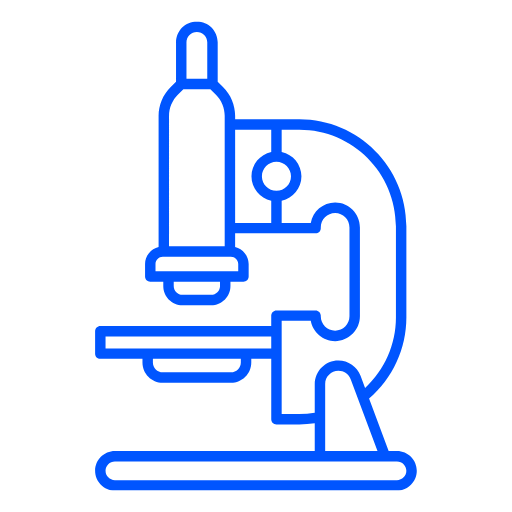Ear Disease & Video Otoscopy
Specialist Care for Recurrent Ear Issues
Ah, pet ear problems! Recurrent ear infections in your pet can be frustrating and costly over time. Recurrent ear disease happens when the underlying problem is not addressed or resolved. Often the root of the issue is allergies, but can also be due to endocrine diseases, masses or polyps, or even abnormal anatomy of the ear. This leads to pain, itching, odour, and a lot of frustration for you and your pet!
With a proven approach and diagnostic methods, we get to the root of your pet’s recurrent or chronic pain and infections. We often use video-otoscopy or bacterial culture to understand and treat the issue. It helps us determine the underlying cause, assess the anatomy, look for any obstructions, masses, or foreign bodies. A veterinary dermatologist is trained to diagnose any of the underlying conditions and helping to resolve the primary problem.
Video otoscopy allows us to examine the entire ear canal with a camera embedded into the scope. With enhanced magnification and clarity, we can visualize the entire canal, the ear drum, and assess the deeper structures to facilitate deeper cleaning, polyp or tumor removal, and perform myringotomies (culture of the middle ear). In challenging ear cases, video otoscopy often leads to a quicker resolution of infection and disease compared to traditional methods. The examination typically requires general anesthesia due to the ear canal’s sensitivity and the need for a still patient.
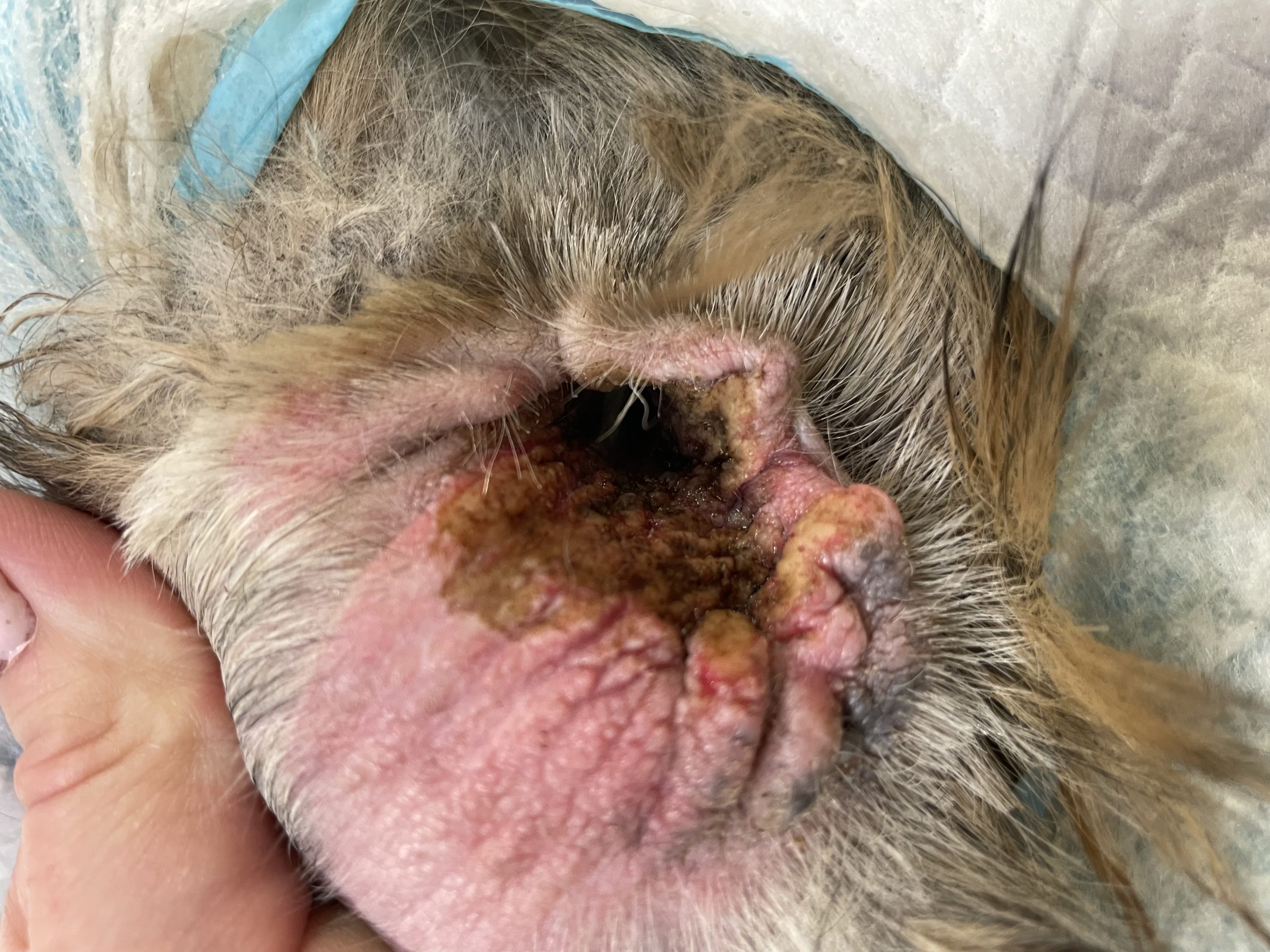
How to book this service?
Please ask your family veterinarian for a referral. Send your veterinarian a referral request to get your initial consultation booked!
We understand you may be struggling to find the help you need for your special pet. We want to help so we created a pet owner self-referral process for a dermatology consultation.

Frequently Asked Questions
After the video otoscopy procedure is complete, Petderm’s veterinary dermatologist will discuss the findings and a personalized treatment plan. While it is uncommon to have any post-op care, there will be follow up required.
The procedure itself is not painful but if your pet is experiencing an active ear infection there may be more associated discomfort. Video otoscopy is general done under general anesthetic and any pain or discomfort is managed by PetDerm’s veterinary dermatologist and team.
Cytology is a diagnostic test that is simple and easy to obtain from most pets. Cytology of the skin or ear is used to identify inflammation and the type of infection present. To perform a cytology test, a PetDerm nurse will use a swab, tape, or slide to collect samples from the ear, which will be examined under a microscope for diagnosis.
The most visible and common symptoms are itchiness toward the affected ear, scratching or rubbing the ear and head shaking. In some cases, excessive debris within the ear, material draining from the ear or an odor might be present. The ear may be red, swollen or scaly.

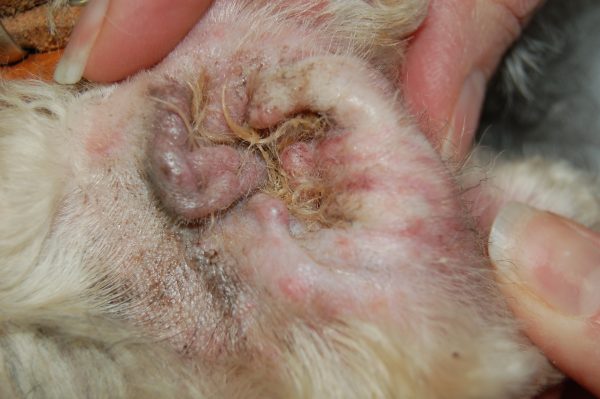
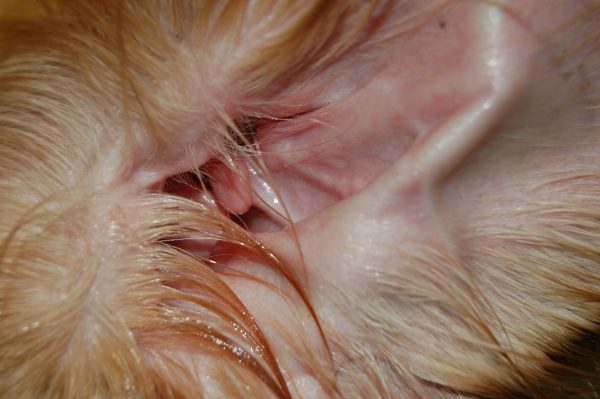
Each pet is different, depending on the severity of disease and infection, your pet may require sedation or anesthesia. A consultation with PetDerm’s veterinary dermatologist will determine the best approach for your pet’s comfort and safety.
Video otoscopy is considered a generally safe procedure but like any medical procedure, there may be minimal risks. There are associated risks if you pet requires sedation or anesthesia for this procedure. A PetDerm team member will discuss these risks and your concerns prior to the procedure.
If an ear infection is left untreated, it is likely the infection will continue and worsen. In severe cases, the infection may cause rupture of the ear drum and progress to a middle ear infection. If you have experienced an ear infection, you’ll relate to how uncomfortable and in some cases, painful it can be. Ear infections should be addressed when you first notice symptoms to minimize the impact to your pet.
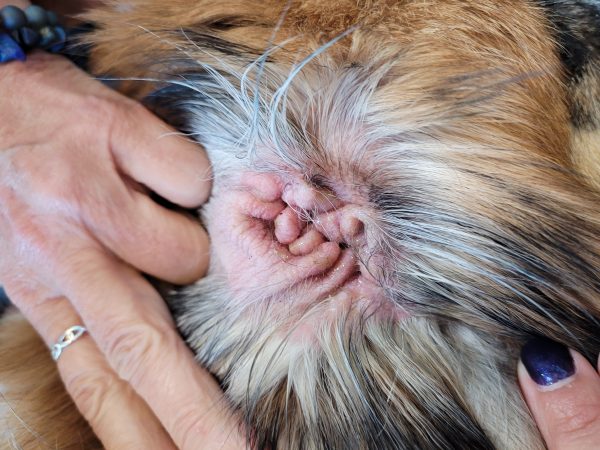
There can be a variety of causes for ear problems including underlying allergies, polyps, tumors, chronic infection and underlying endocrinopathies. The most common cause is underlying allergies that trigger inflammation, itch and secondary infections. PetDerm’s veterinary dermatologist and team specializes in the diagnosis and management of challenging and recurrent ear problems.
Explore other services

